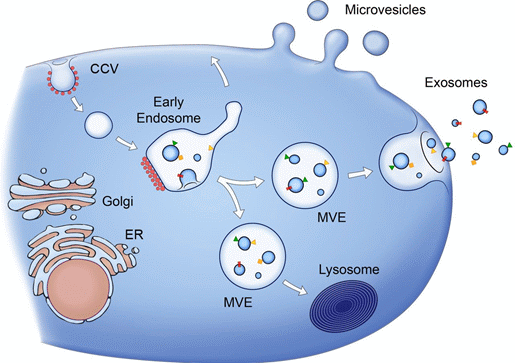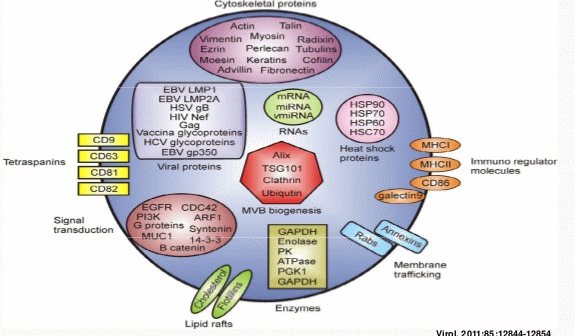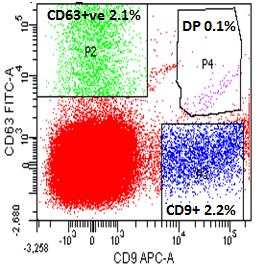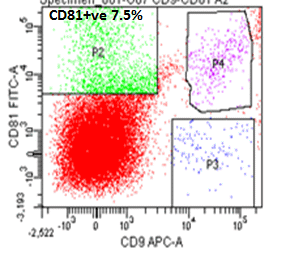Exosomes are secreted membrane vesicles which are submicron in size, ranging from 40-100 nm are endocytotic in origin, whereas the larger microvesicles are 0.1 to 1 um in size. Exosomes and cell derived microvesicles have a membrane structure similar to that of the plasma membrane. Exosomes and microvesicles protein composition reflect the source of cells they are derived from and share structural and biochemical properties with intraluminal vesicles of multivesicular endosomes (MVEs), see figure. The surface membrane of exosomes thus have MHC class I, II, immunomodulatory antigen, CD86, integrins, annexins as well as tetraspannins CD63, CD81, CD82 and CD9, see figure. In Vitro studies have shown that exosomes could participate in the induction of the immune response, in the pathogenesis of neurodegenerative diseases and facilitating communication between tumour cells and their microenvironment.
Exosomes are isolated by overnight differential ultra centrifugation. However more recently flow cytometry has been applied to study exosomes in a manner similar to that of microvesicle detection with caveats. Exosomes have been characterized in that they express on their outer membrane leaflet antigens which allow their identification these include tetraspannins CD63, CD81 and CD9. These can be used to characterise, isolate and semi-quantitate different types of exosomes by a combination of technical approaches. This includes flow cytometry by the use of fluorescently tagged antibodies to identify numerous different types of exosomes including CD63-CD9 exosomes, see figure. Also CD81-CD9 exosomes can be identified by flow cytometry, see figure. Given the small nature of exosomes it is thought that standard flow cytometry analyses several hundred exosomes at once. Currently it is not understood how single positive exosomes seem to appear in dual parameter analysis of exosome preparations as it would be predicted that all, single exosome event would be double positive only. Currently we are investigating why the contrary appears to be detected.




